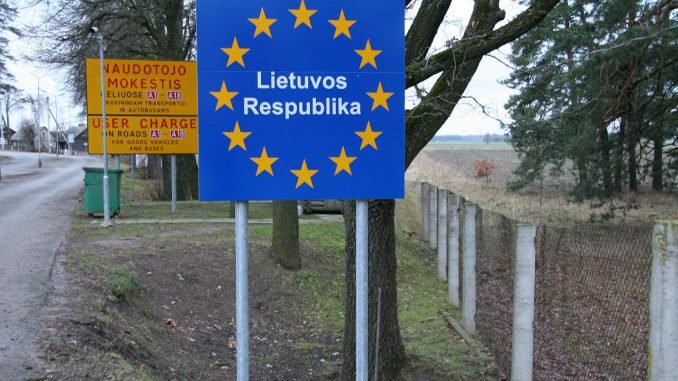
Minister of National Defence Arvydas Anušauskas says that the situation on Lithuania’s border is connected to the overall security situation in the region, which is mainly shaped by Russia’s war against Ukraine. According to the Minister, what is happening in Belarus is a reflection of the war in Ukraine, and the “Wagner” mercenary group has begun to fragment, with attempts to leave Belarus for Russia, Eglė Samoškaitė reported in TV3.lt
“Looking at the current situation on our border, I would say that the war in Ukraine shapes the situation in the whole region, and we cannot ignore that. What is happening in Belarus is just a reflection of that. What is happening with the group of Wagnerists now in Belarus – new data will not be coming to us for a while yet – but we can see the changes, the fragmentation, and the attempts to leave Belarus for Russia. There is everything. We are monitoring the situation closely, and information is being received from our institutions, the Second Department of Operational Services, and our partners,” Anušauskas said.
As is well known, after the failed revolt of the” Wagner“ mercenary group against Russian President Vladimir Putin in June, some of the mercenaries were placed in Belarus. However, on 23 August, two months after the mutiny, Wagner’s leader, Yevgeny Prigozhin and the organisation’s military commander, Dmitry Utkin, were killed in a plane crash in Russia’s Tver region. Many believe the plane crash was not accidental but was carried out in retaliation against Putin. Following the deaths of the mercenary group’s leaders, information emerged that “Wagner” was seeking to leave Belarus for Russia.
“For every prigozhin, there is a new prigozhin to that place. A new prigozhin will take the place of a dead prigozhin. It may be occupied by other people, on other grounds, perhaps, with different links to the Russian Ministry of Defence and so on. We talk a lot about this group. Yes, it is dangerous; it has been declared a terrorist group in many countries, and rightly so, but the overall security situation is dictated by the war in Ukraine and all the other related factors,” explained the Minister of National Defence.
Despite such information, the situation on Lithuania’s border remains “stably unstable” as the Russian and Belarusian regimes are not predictable, so, on August 25, the border guards and the military organised the tactical exercise “Priedanga 2023”. Border security needs to be reinforced in light of potential threats, ranging from migrants to possible provocations from the “Wagner” group or others.
As for the exercise itself, there were two scenarios today: one scenario related to irregular migrants and a second scenario pertaining to a subversive group and the containment of the situation. Today, there were these scenarios, but we will continue with future phases of the exercise. Interior Minister Agnė Bilotaitė announced that the Ministry of Internal Affairs is planning a new cycle of exercises in October, named “Šventaragis,” during which they will evaluate the mechanisms for managing emergency situations and how they work and affect our institutions.
The essence of the State Border Cover Plan is that in the case of any unexpected event on the Lithuanian border, the necessary reinforcements from the Lithuanian Armed Forces or the Riflemen’s Union would be immediately available without any bureaucratic coordination.
“Each exercise is an imitation of actual events. And, as the border guards have told us, they create scenarios based on real events. The military may not be able to afford it, but they constantly monitor how the situation on the border is developing, what measures should be taken, and with adequate means, to support our partner institutions during peacetime, when hybrid attacks may occur,” said A. Anušauskas.
The State Border Protection Shelter Plan regulates the protection of the external and internal borders when enhanced state border protection regimes or levels of protection are declared. The plan sets out criteria for threat levels, when and to what extent the Lithuanian Armed Forces, the Riflemen’s Union and other responsible intelligence institutions and services will be deployed.
According to Rustam Lyubayev, Commander of the State Border Guard Service, the initial assessment is that the interaction between the border guarding authorities is good, but the results of the tactical exercises will be assessed in a commanders’ discussion.


Be the first to comment